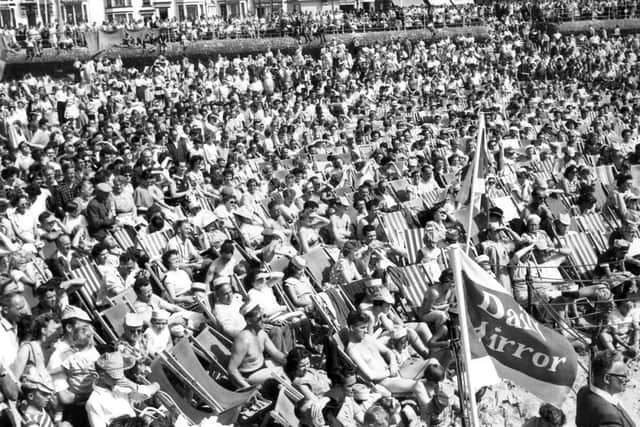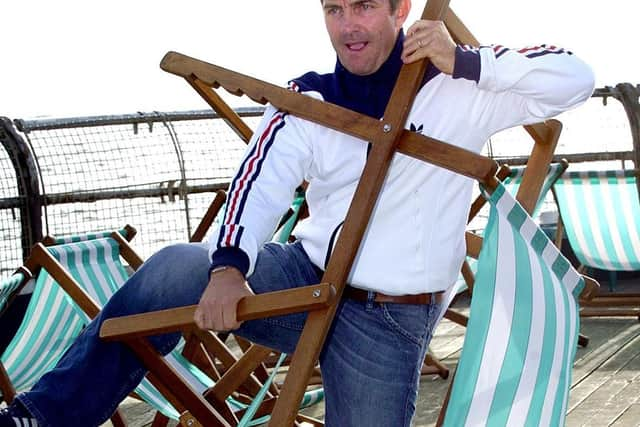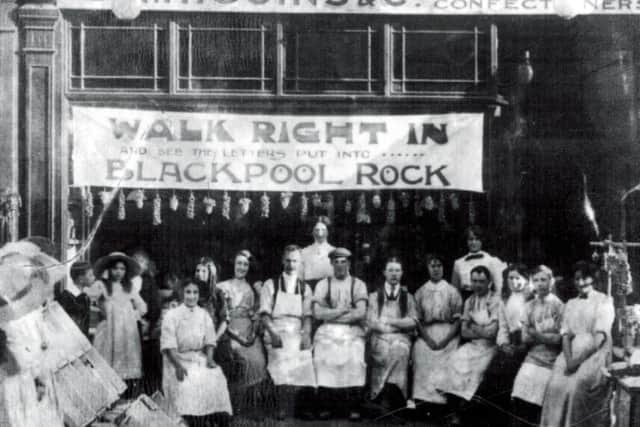From those Victorian dodgy dealers to discovery of a gold mine at Blackpool by the sea
and live on Freeview channel 276
After a lapse of 10 years deckchairs returned to Blackpool’s golden sands this year.
And while the sun often failed to appear for local entrepreneur Andrew Beaumont, we local history buffs can end the season by dipping into Memory Lane’s 2015 story of “stands on the sands.”
Advertisement
Hide AdAdvertisement
Hide AdWay back in Victorian days the sands were awash with what we might today call dodgy dealers.


Arthur L. Warner, a former news editor of the Gazette, became the paper’s resident historian with a long-running series called How It All Began.
In a 1964 article he recalled how Blackpool’s golden sands became a little gold mine.
He wrote: “Blackpool made probably it’s best investment when it purchased the sands from the Duchy of Lancaster, the owners of the foreshore, for what would now be regarded as the paltry sum of £960.”
(In today’s values that sum would be close to a million).


Advertisement
Hide AdAdvertisement
Hide AdWarner said a council resolution of February 6, 1896, altered the boundaries of the township to include the foreshore.
But when the sands were bought from the Crown some people argued a large sum of money was being squandered on something that would never be of any value to the resort.
“How wrong can people be when they enter the realms of prophecy?” wrote Arthur Warner.
“The council’s idea in buying the foreshore rights was to regulate the sands and prevent obstruction and unlimited trading but when they bought the sands they had no idea what a gold mine they had struck.”


Advertisement
Hide AdAdvertisement
Hide AdBy 1901 the auction of licences to traders was bringing in £1,000 a year and the revenue for the 1913 season was £2,683.”
Warner wrote that he attended, as a young reporter, his first sands auction in 1914, when a record sum of £145 was paid for an ice cream licence.
He recalled that the auctioneer began by saying no licence would be issued for the sale of Blackpool rock or any confectionary of that nature, any medical recipe, quack or proprietary medicine, jewellery or fancy goods (which included buckets and spades) nor to phrenologists, palmists, chiropodists or àuctioneers.
Nevertheless, 240 licenses were auctioned in three hours. It was in 1914 that a new seaside goldmine was discovered. The council was offered £100 for the right to rent out deckchairs on the sands for the season.
Advertisement
Hide AdAdvertisement
Hide AdWarner wrote that local businessmen and even some members of the council scoffed and asked who would pay for a deckchair when they could sit on the sands for nothing.
But the bidder, Mrs Rose E. Osbourne, was right and in seven years “she did so well that her rental to the Corporation grew to £1,000 a season.”
In 1920 the council talked about taking over the deckchair lettings. Mrs Osbourne offered £10,000 cash down for a seven-year lease. It was accepted - and then rejected.
The council began deckchairs lettings in 1921. In three seasons they more than covered Mrs Osborn’s offer of £10,000 and in 20 years made a profit of £87,000.
Advertisement
Hide AdAdvertisement
Hide AdMany Fylde coast readers will remember that during the winter hundreds of deckchairs were left in stacks on the promenade, tightly roped together in waterproof covers.
But by the 2000s the deckchair business had lost its stripes and the council sold its remaining stock in 2013.